Airflow around an Aircraft, CFD Simulation ANSYS Fluent Training
Free
- The problem numerically simulates Airflow around an Aircraft in ANSYS Fluent software.
- The 3D geometry of the model is created in Design Modeler software.
- The model is meshed in ANSYS Meshing creating 3,190,893 elements.
- We simulate the problem steadily via pressure-based solver.
- The SST k-omega model is used to describe turbulence of the flow.
To Order Your Project or benefit from a CFD consultation, contact our experts via email (info@mr-cfd.com), online support tab, or WhatsApp at +44 7443 197273.
There are some Free Products to check our service quality.
If you want the training video in another language instead of English, ask it via info@mr-cfd.com after you buy the product.
Description
Description
The present simulation is about airflow around an aircraft via ANSYS Fluent. In this simulation, an aircraft is designed inside the computational zone filled with airflow. The airflow travels towards the aircraft at 100 m.s-1 and hits its fuselage. This project aims to investigate the pressure on the fuselage and the profile of changes in velocity and pressure around the fuselage.
The present geometry is designed in a 3D model via Design Modeler. A giant cubic computational zone is designed to define airflow, and an aircraft is modeled within this computational zone. The mesh of the present model has been done via ANSYS Meshing. Mesh is done unstructured, and the number of production cells is equals 3,190,893
Methodology
In this model, an airplane situated within a computational domain filled with moving air is considered. The air, moving at a speed of 100 m/s, is directed towards the airplane, making contact with its main body. This simulation is done steadily and with pressure-based solver because of the incompressible air flow. The effect of gravity is ignored and the turbulence of the flow is simulated via SST k-omega model.
Conclusion
After calculation, 2D and 3D contours related to pressure and velocity are obtained. The contours show significant pressure and velocity changes appearing around the fuselage.
The pressure contours show that the maximum pressure is exerted on the front of the aircraft, and the velocity contours indicate that a separation zone is created on the aircraft’s rear. Also, the drag force on the aircraft equals 16916.279 N, and the lift force on the aircraft is equal to 104220.68 N.
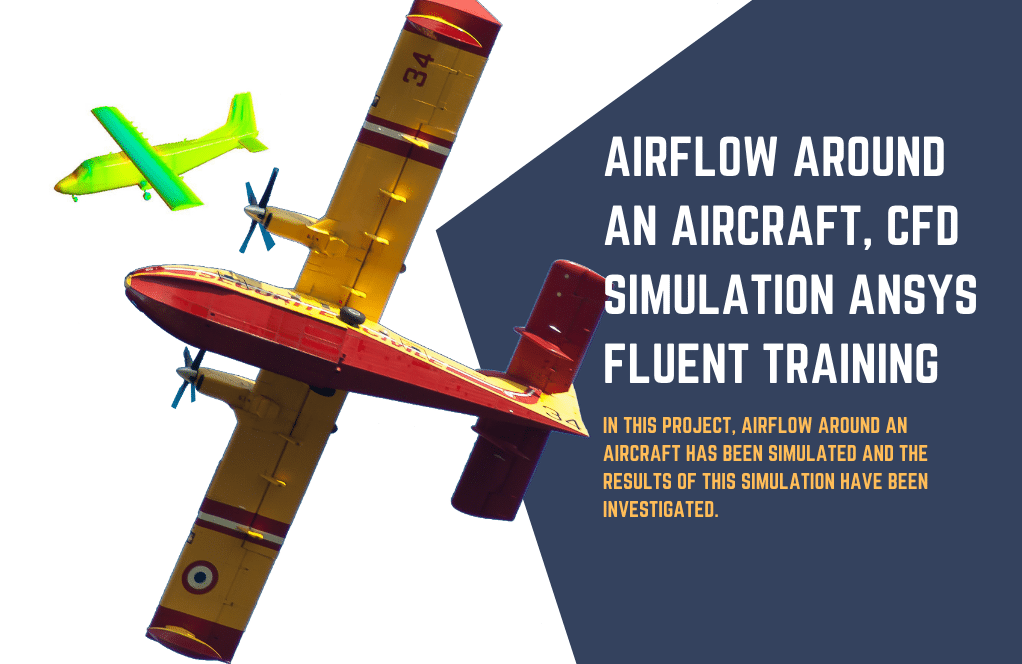
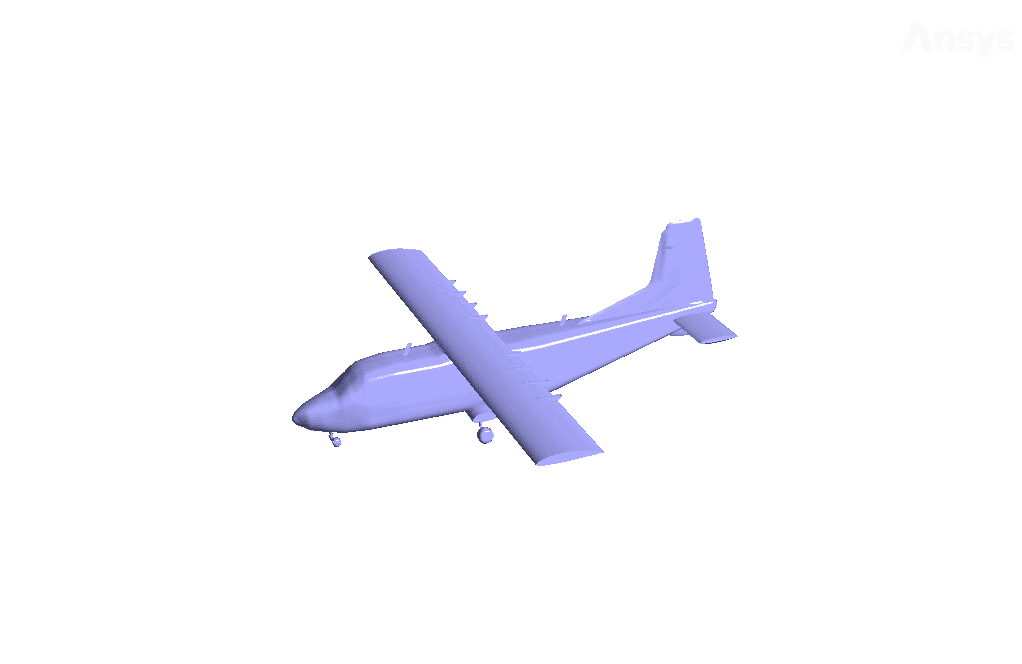
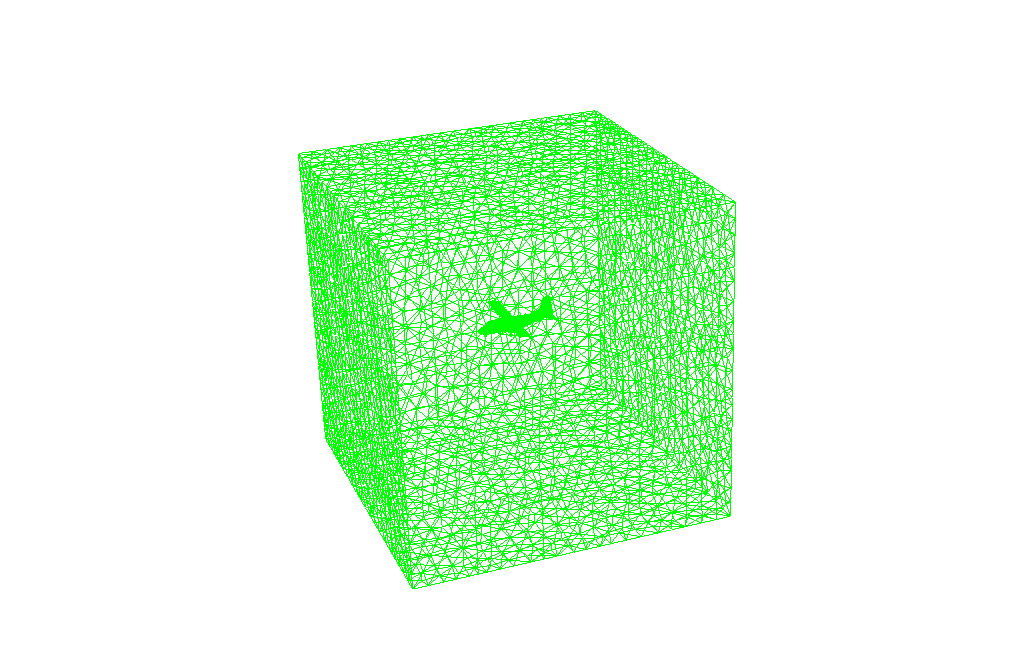
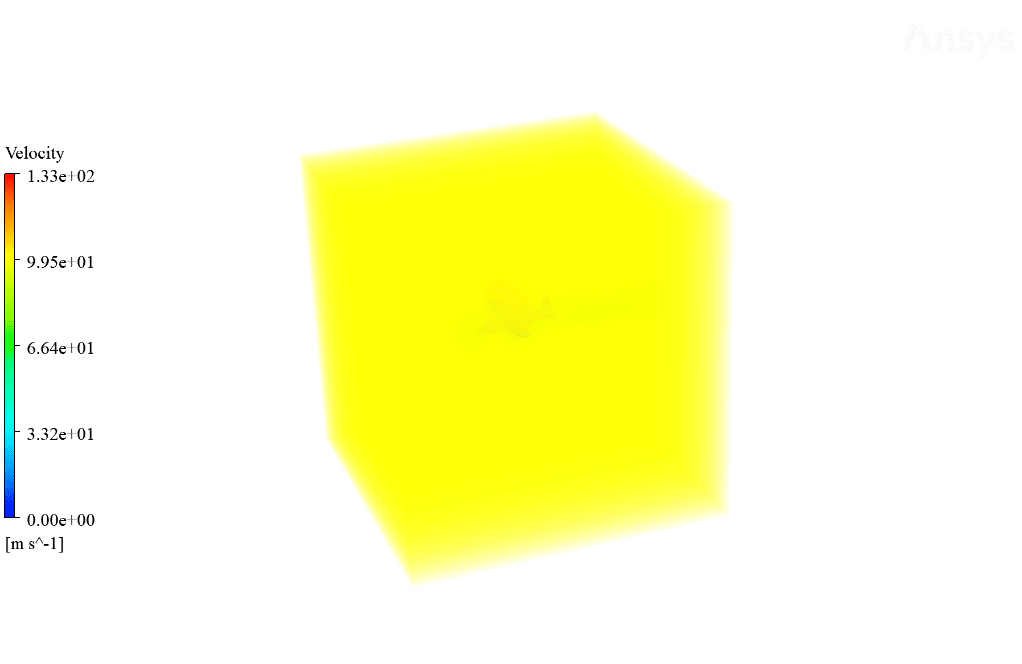
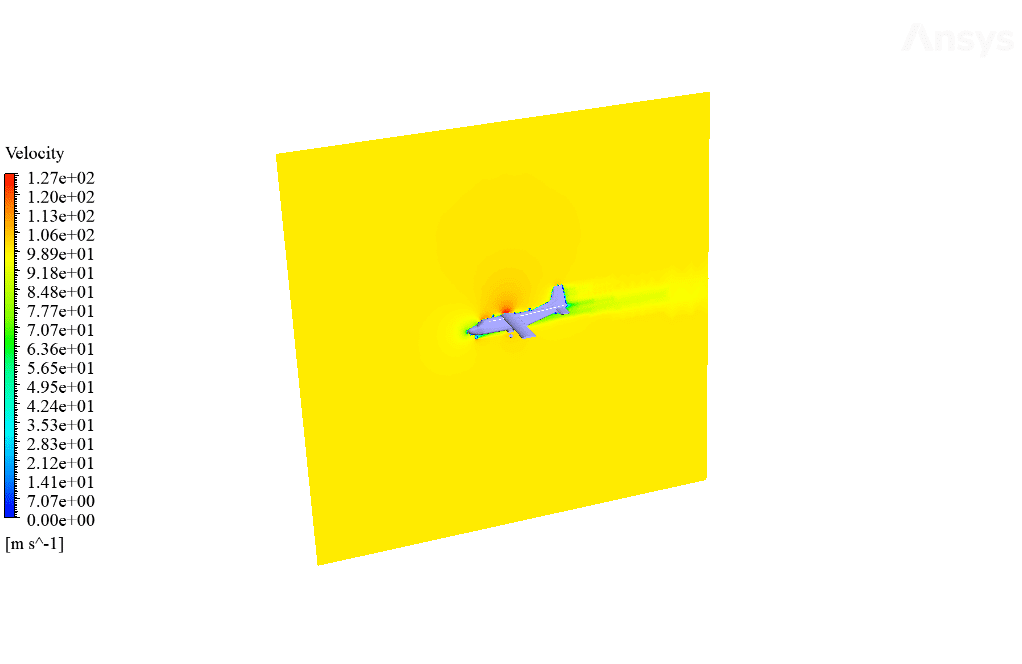
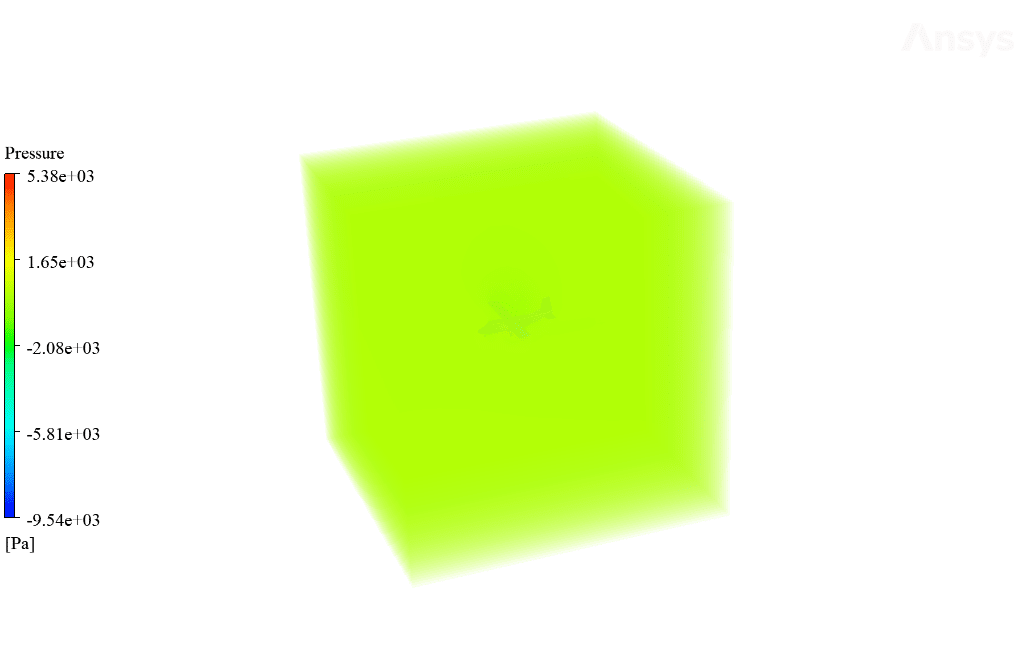
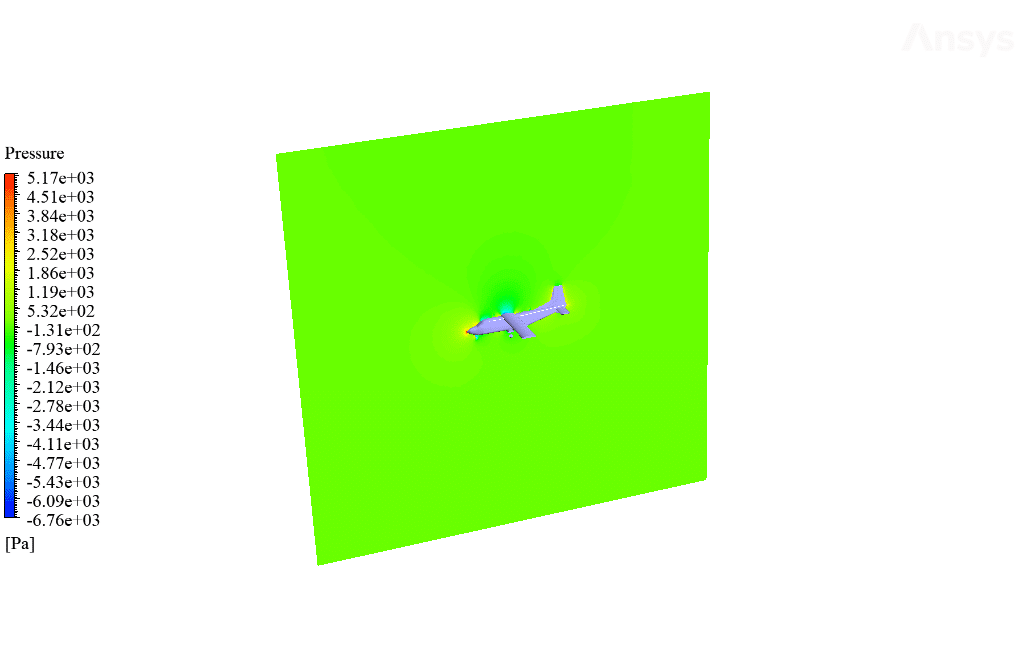
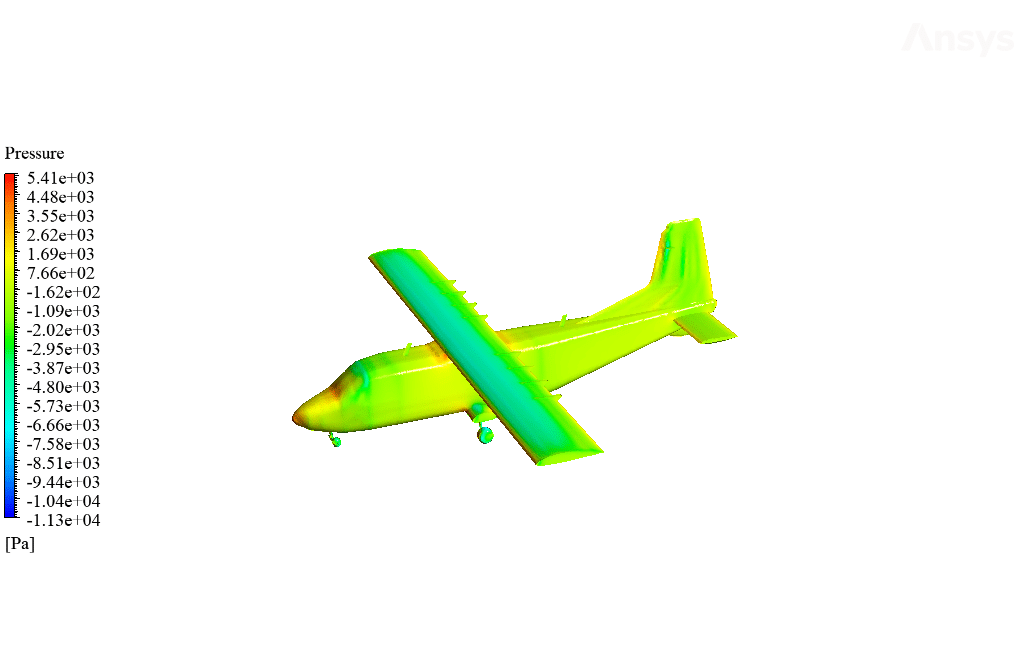


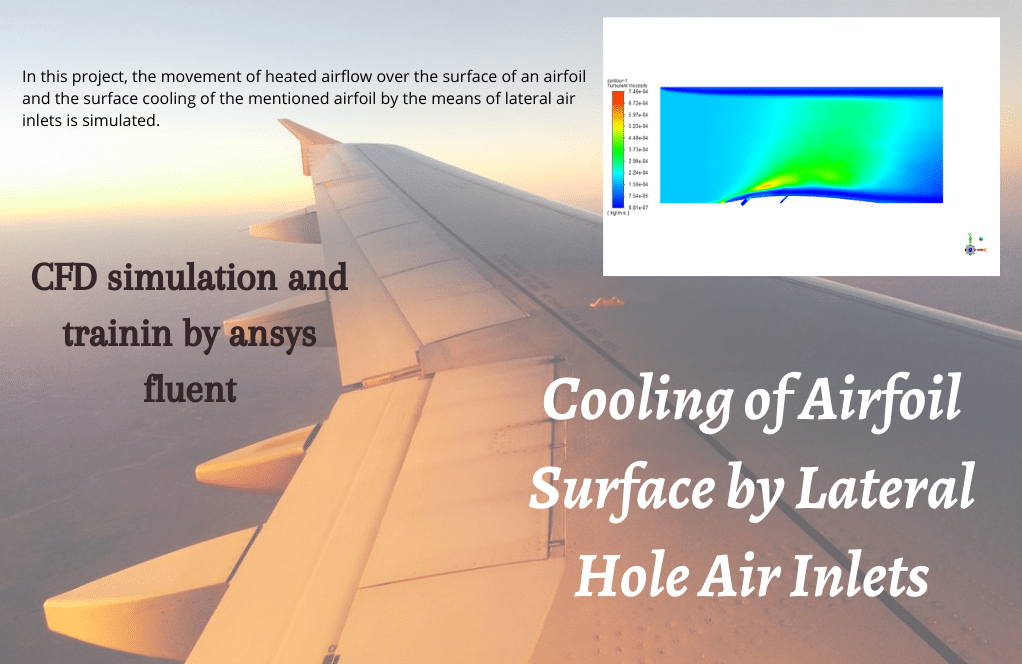

Destin Bashirian –
The explanation of the airflow simulation around the aircraft covered everything clearly and precisely. Incredible detail in the models and the resultant data like pressure and velocity changes were particularly enlightening. The forces calculation also adds a great touch to understand aerodynamic performance!
MR CFD Support –
Thank you so much for your kind words! We’re really glad you found the training materials detailed and enlightening. Understanding the aerodynamics around an aircraft is crucial and we strive to provide the best insights through our simulations. We appreciate your acknowledgment of the forces calculations and their importance in aerodynamics performance analysis!
Javonte Rohan –
I was impressed by the detailed results and visualizations provided by the ANSYS Fluent simulation for the aircraft’s airflow! Clearly showed where the high-pressure zones are and where flow separation occurred. Fantastic understanding of aerodynamic forces at work!
MR CFD Support –
Thank you for your positive feedback! We are thrilled to hear that our simulation met your expectations and provided you with clear visualizations of the aerodynamic forces on the aircraft. If you have any further questions or need assistance, please do not hesitate to reach out.
Carolyn Schultz –
I’m thoroughly impressed with the Airflow around an Aircraft CFD Simulation training. The attention to detail in both the meshing process and the clear depiction of pressure changes around the fuselage enhanced my understanding of aerodynamics. The rendered 2D and 3D contours provided a vivid illustration that really helped to visualize the airflow patterns.
MR CFD Support –
Thank you for your kind words! We’re delighted to hear that our Airflow around an Aircraft CFD Simulation has contributed positively to your understanding of aerodynamics. The team at MR CFD is committed to providing comprehensive training materials, and it’s encouraging to know that the quality of our content, from meshing to data presentation, is appreciated. Your feedback motivates us to continue delivering top-notch educational experiences.
Melyna Keebler –
I am very impressed with the detailed flow analysis the training provided for aircraft aerodynamics using ANSYS Fluent. The results clearly demonstrated crucial elements such as the pressure and velocity contours around the fuselage, which are essential for understanding aircraft performance in real-world conditions.
MR CFD Support –
Thank you for taking the time to leave such a positive review! We’re thrilled to hear that you found the training informative and the analysis on aircraft aerodynamics insightful. Understanding the aerodynamics is indeed crucial for performance, and we’re glad we could help illuminate that for you. If there’s anything else we can assist you with, please let us know!
Dr. Stone Russel I –
The way air flows over the aircraft was beautifully shown in the 2D and 3D contours. It’s fascinating to see how the pressure and velocity change around the aircraft’s fuselage.
MR CFD Support –
Thank you for your positive feedback! We’re delighted to hear that you found the visual representations of the airflow around the aircraft informative and engaging. It’s our goal to provide clear and enlightening insights into complex aerodynamic phenomena!
Dr. Unique O’Conner –
The way you explained the aerodynamics involved with airflow around the aircraft was clear and very informative. Seeing the pressure and velocity changes around the fuselage gives great insight into aircraft design considerations.
MR CFD Support –
Thank you for the positive feedback! We’re delighted to hear that you found the simulation informative and useful for understanding the complex aerodynamics of aircraft. Our goal is to provide clear and comprehensive analyses, so we’re thrilled to know that we’ve achieved that for you!